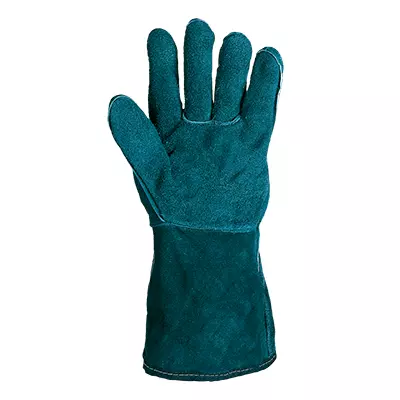
Features You'll Love

EN 388 · Abrasion Resistance Level 3
EN 407 · Heat Contact Level 2, Metal Splash Resistance Level X, Molten Metal Resistance Level X, Burning Behaviour Level 4, Heat Convection Level X, Radiant Heat Level X
Provides good resistance against scraping, scratching, and rubbing on rough or abrasive surfaces.
This product provides protection from contact heat up to 250°C for at least 15 seconds. It is ideal for tasks where you might briefly handle hot items, such as in kitchens or workshops.
This product has not been tested for resistance against splashes of molten metal under the EN 407 standard. It does not offer rated protection for tasks where this is a risk, such as welding.
This product has not been tested for resistance against splashes of molten metal. It provides no claimed protection and should not be used for welding, foundry work, or other tasks with molten metal risks.
Provides the highest level of protection against catching fire when exposed to a naked flame. After the flame is removed, the material will stop burning within 2 seconds and stop glowing within 5 seconds.
This product was not tested for protection against convective heat, which is the transfer of heat through moving air, such as from a flame. Therefore, it has no claimed performance level for this specific thermal risk.
This product was not tested for protection against radiant heat, which is intense heat that can be felt from a distance. It does not claim to offer protection for tasks involving prolonged exposure to radiant heat sources.
Sir Safety System
Taiwan Glove Green, 12 pairs
Taiwan Glove Green, 12 pairs
4.7 / 5
751,35 kr
Price per 12 pairs
62,61 kr / pair
Choose size
Shipping fee is 55,20 kr for orders under 1 650,00 kr
Features You'll Love

EN 388 · Abrasion Resistance Level 3
EN 407 · Heat Contact Level 2, Metal Splash Resistance Level X, Molten Metal Resistance Level X, Burning Behaviour Level 4, Heat Convection Level X, Radiant Heat Level X
Provides good resistance against scraping, scratching, and rubbing on rough or abrasive surfaces.
This product provides protection from contact heat up to 250°C for at least 15 seconds. It is ideal for tasks where you might briefly handle hot items, such as in kitchens or workshops.
This product has not been tested for resistance against splashes of molten metal under the EN 407 standard. It does not offer rated protection for tasks where this is a risk, such as welding.
This product has not been tested for resistance against splashes of molten metal. It provides no claimed protection and should not be used for welding, foundry work, or other tasks with molten metal risks.
Provides the highest level of protection against catching fire when exposed to a naked flame. After the flame is removed, the material will stop burning within 2 seconds and stop glowing within 5 seconds.
This product was not tested for protection against convective heat, which is the transfer of heat through moving air, such as from a flame. Therefore, it has no claimed performance level for this specific thermal risk.
This product was not tested for protection against radiant heat, which is intense heat that can be felt from a distance. It does not claim to offer protection for tasks involving prolonged exposure to radiant heat sources.
Product description
Product Features:
- Heat-resistant split leather construction
- Denim cotton lining
- Split leather cuff
Technical Details:
- Total length: 35 cm
- Cuff length: 14 cm
Standards:
- EN 388: 3142X
- EN 407: 42XXXX